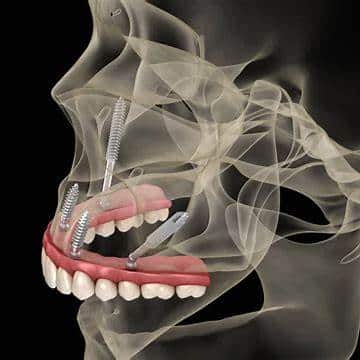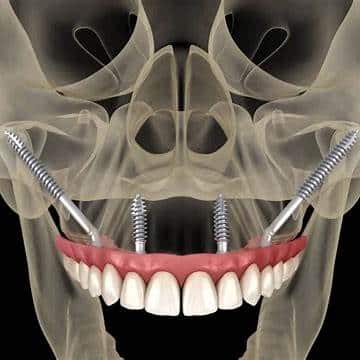For some patients, traditional dental implants may not be possible due to severe bone loss in the upper jaw. Zygomatic implants offer a highly effective alternative. These specialized implants anchor into the zygoma—also known as the cheekbone—which provides strong, stable support for replacement teeth, even when the upper jawbone lacks the density or volume to support conventional implants.
What Are Zygomatic Implants?
Zygomatic implants are longer than standard dental implants and are placed at a different angle. Instead of being anchored in the upper jaw (the maxilla), they extend into the zygomatic bone—a dense, strong bone located in the cheek area. This bone typically remains healthy and strong, even in patients who have experienced significant bone loss in the upper jaw.
Zygomatic implants can be a life-changing solution for patients who:

- Have been told they are not candidates for traditional implants
- Have experienced bone loss due to gum disease, injury, or long-term denture use
- Want to avoid bone grafting or sinus lift procedures
- Are seeking a more immediate or fixed solution for missing upper teeth
The Procedure: What to Expect
Zygomatic implant surgery is a more advanced procedure and is typically performed by an experienced oral and maxillofacial surgeon. Here’s what you can expect:
- Consultation and Imaging
We begin with a comprehensive consultation, including 3D imaging (such as a CBCT scan), to evaluate the quality and structure of your bone. This allows us to precisely plan the angle, length, and placement of the implants. - Surgical Placement
The procedure is performed under sedation or general anesthesia for your comfort. The zygomatic implants are carefully inserted at an angle through the upper jawbone and anchored securely in the zygomatic bone.
- Immediate or Delayed Restoration
Depending on your case, a temporary fixed prosthesis (set of teeth) may be placed the same day. In other cases, a short healing period is needed before final restoration. - Healing and Integration
As with traditional implants, the surrounding bone will gradually integrate with the implant—a process called osseointegration—providing long-term stability.
Benefits of Zygomatic Implants
- No need for bone grafts or sinus lifts
Avoids additional surgeries and long healing periods often required before traditional implants. - Faster treatment timeline
In some cases, new teeth can be placed the same day as surgery. - High success rates
Zygomatic implants have shown excellent long-term success, even in complex cases. - Restores confidence and function
Eat, speak, and smile with confidence again—even if you’ve been told you’re not a candidate for implants.

Recovery and Aftercare
Recovery from zygomatic implant surgery varies by individual but is generally manageable with prescription or over-the-counter pain medications. Swelling and bruising are normal for a few days. We’ll provide you with detailed post-operative instructions to help ensure a smooth recovery.
Good oral hygiene and regular follow-up appointments are essential to maintaining the health of your implants and surrounding tissues.
If you’ve been told you don’t have enough bone for dental implants, zygomatic implants may be the solution you’ve been waiting for. Our team specializes in advanced surgical options and will work closely with your restorative dentist to rebuild your smile with stability, comfort, and confidence.